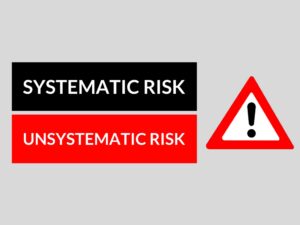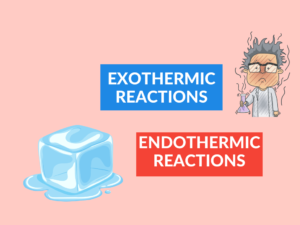The Difference Between Botox and Xeomin – What You Need to Know
Do you want to reduce the appearance of wrinkles and lines on your face? Botox and Xeomin are popular treatments that can help you achieve a more youthful look. But what exactly are Botox and Xeomin, and what sets them apart? In this article, we will explore the differences between Botox and Xeomin, including their uses, effects, and potential side effects.
What is Botox?
Botox, short for Botulinum Toxin Type A, is a neurotoxic protein purified from the bacteria Clostridium botulinum. It is a popular non-surgical cosmetic treatment used to reduce the appearance of wrinkles and fine lines. Botox works by blocking nerve signals in the muscles, which temporarily relaxes them and reduces the appearance of wrinkles. It is primarily used on the face but can also be used to treat various medical conditions.
Examples of Botox
- Smoothing out frown lines between the eyebrows
- Softening crow’s feet around the eyes
- Reducing forehead wrinkles
- Lifting drooping eyebrows
What is Xeomin?
Xeomin, also known as incobotulinumtoxinA, is another popular injectable treatment used to reduce the appearance of wrinkles and fine lines. Like Botox, Xeomin is derived from the bacteria Clostridium botulinum and works by blocking nerve signals in the muscles. However, Xeomin offers some unique characteristics that set it apart from Botox.
Examples of Xeomin
- Smoothing out glabellar lines (vertical frown lines between the eyebrows)
- Reducing fine lines and wrinkles around the eyes
- Improving the appearance of forehead lines
- Softening chin dimples
Differences between Botox and Xeomin
| Difference Area | Botox | Xeomin |
|---|---|---|
| Onset of Action | Generally takes 3 to 7 days to see full results | Results may be noticeable within a shorter time frame (2 to 4 days) |
| Protein Content | Contains additional surrounding proteins | Does not contain accessory proteins, which may reduce the risk of developing resistance over time |
| Storage | Requires refrigeration to maintain stability | Does not require refrigeration, making it more convenient for transportation and storage |
| Injection Technique | May require multiple injections in the same treatment area | May require fewer injections due to its unique formulation |
| Unit Conversion | 1 unit of Botox is roughly equivalent to 1 unit of Xeomin | 1 unit of Xeomin is also roughly equivalent to 1 unit of Botox |
| Cost | Prices may vary depending on the clinic and location | Prices may vary depending on the clinic and location |
| Duration of Effects | Typically lasts 3 to 6 months | Typically lasts 3 to 6 months |
| Allergic Reactions | May have a higher risk of allergic reactions due to proteins | May have a lower risk of allergic reactions due to the absence of accessory proteins |
| Preferred by Certain Physicians | Has been available for a longer time and is widely used | May be preferred by physicians who are concerned about developing resistance over time |
| Off-Label Uses | Approved for various medical conditions, such as migraines, overactive bladder, and excessive sweating | Similarly approved for various medical conditions as Botox |
Conclusion
In conclusion, Botox and Xeomin are both effective treatments for reducing wrinkles and fine lines. While they have many similarities, they also have some distinct differences. Xeomin may have a faster onset of action, does not contain accessory proteins, and does not require refrigeration for storage. However, Botox has been widely used for a longer time and may be preferred by certain physicians. The choice between Botox and Xeomin ultimately depends on individual preferences and the advice of a qualified healthcare professional.
Knowledge Check
- True or False: Botox and Xeomin are both derived from the bacteria Clostridium botulinum.
- What is the main difference between Botox and Xeomin in terms of protein content?
- Which treatment requires refrigeration for storage?
- What is the typical duration of effects for both Botox and Xeomin?
- Which treatment may have a higher risk of allergic reactions due to proteins?
- True or False: Xeomin is preferred by physicians concerned about developing resistance over time.
- True or False: Both Botox and Xeomin are approved for various medical conditions.
- What is the unit conversion between Botox and Xeomin?
- Which treatment may require fewer injections due to its unique formulation?
- What is the main factor in determining the cost of Botox and Xeomin treatments?
Answers:
- True
- Botox contains additional surrounding proteins, while Xeomin does not contain accessory proteins.
- Botox requires refrigeration for storage.
- Both Botox and Xeomin typically last 3 to 6 months.
- Botox may have a higher risk of allergic reactions due to proteins.
- True
- Both Botox and Xeomin are approved for various medical conditions.
- 1 unit of Botox is roughly equivalent to 1 unit of Xeomin.
- Xeomin may require fewer injections due to its unique formulation.
- The cost of Botox and Xeomin treatments can vary depending on the clinic and location.
Related Topics
If you found this article helpful, you may be interested in other topics related to cosmetic treatments and skincare, such as:
- The Benefits of Injectable Fillers
- Comparing Botox and Dysport – Which is Right for You?
- Understanding Different Types of Facial Wrinkles
- The Importance of Sunscreen for Skin Health



